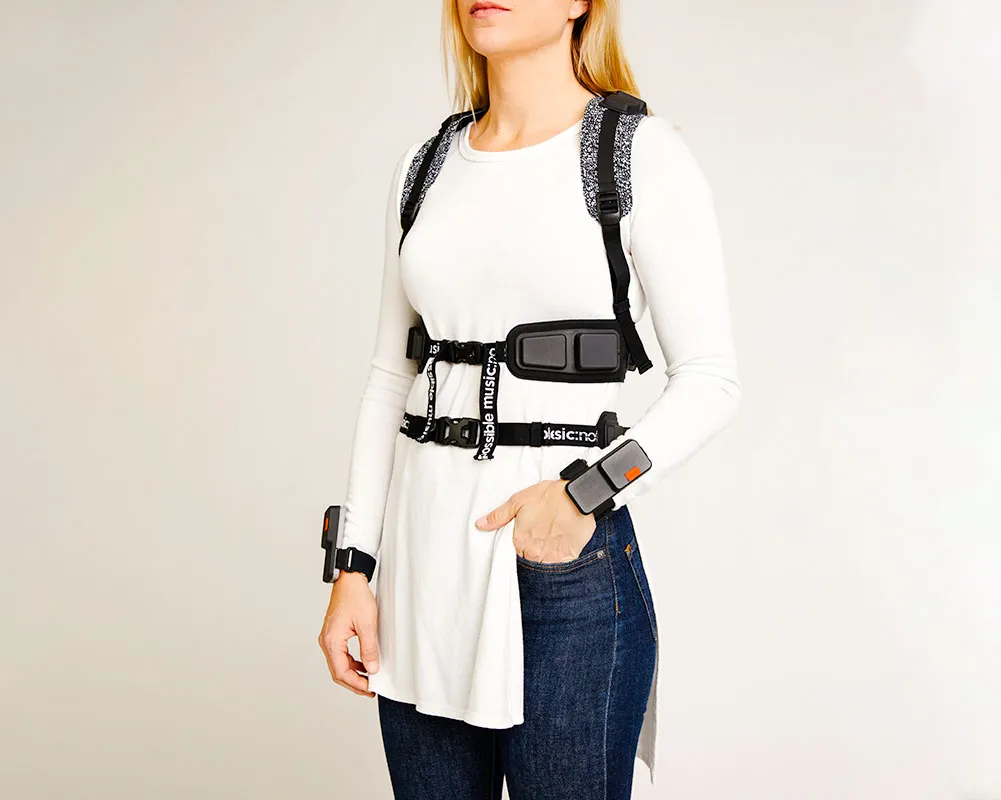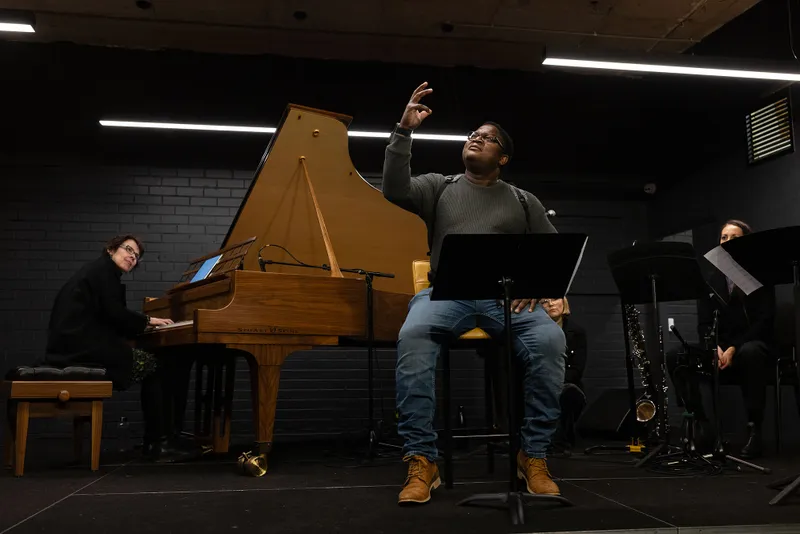The deaf community has a long history as concert-goers, attending deaf clubs, or utilising items like blown-up balloons or pipes to feel the vibrations of a live performance.
Despite this, there is an often-held belief that those who are deaf are unable to enjoy music. But instead of experiencing the sound of music, a deaf person can feel the music through the intense vibrations that we all feel from a particularly powerful speaker or instrument.
Building on this concept, the tech innovation company Not Impossible has collaborated with technologists, musicians, venues and production companies to make the vibrations of music more accessible to both deaf and hearing music lovers.
Getting suited up
“Nothing is impossible forever” boasts the Not Impossible website, proudly in large font. A bold claim, but one that matches the unique nature of the products that they are working on.

Led by founder Mick Ebeling, Not Impossible Labs is designed around innovation that provides accessibility where it wasn’t previously available. While there is a clear wave of innovation in the world of accessibility technology right now, Not Impossible takes a rather unique route.
Helping blind skateboarders ride via echolocation, creating navigational superhero suits for a deaf and partially blind child, or even something as simple as helping localised hunger via text messaging, Not Impossible has learned to think outside the box.
With all its projects given codenames, one of the company’s most recent projects is known as ‘Music: Not Impossible'. The idea is simple but the execution is quite a bit harder – make music accessible to all, even those who are unable to hear it.
The project revolves around vests and accompanying wrist and ankle bands. Across these wearables are 24 touch points which can be synced up to instruments, vibrating in conjunction with the different instruments in a piece of music.
Designed by musician and inventor Daniel Belquer, these vests are intended to make music more interactive, both for those with hearing difficulties and anyone else wanting a bigger experience from live music.

The vests use a vibrating textile, translating sound onto the skin via vibrations. This, in theory, is a more nuanced alternative to techniques adopted by deaf concertgoers, like standing close to the speakers or holding a balloon to feel vibrations.
While these vests are now pretty advanced, built with sturdy fabrics and clear vibrating packs across the body, it has come a long way. Originally, the technology was tested by attaching vibrating cell phone motors to the body. This was unsurprisingly lacking in nuance and required vast changes to get to where the team is now.
Changing the music experience
Since the vests have reached a usable level, the team behind them have utilised them in a number of live experiences. Vests were given out at a concert with half deaf concertgoers and half hearing, testing the capability for both groups.
Elsewhere, the vests have been tested with Mandy Harvey, a deaf singer, to help her experience the music she is playing, and have even been tested by famous musicians like Pharell.
One of the more recent uses of the vests was by an Australian production company called Newmarket Collective. Collaborating with Not Impossible, they hosted an event to celebrate haptics and performance.

Delivered in Auslan – the Australian form of sign language – the entire show was a collaboration of accessibility, mixing sign language, performances, and the use of the haptic vests.
One of the performers at the event was Walter Kadiki, a deaf poet who wore one of the haptic vests throughout his performance.
“I wanted to do a concert with deaf artists. We came up with a concept and invited Walter and an actor to sign his poems to music,” Kylie Davis, director of The Newmarket Collective told BBC Science Focus.
“We had a pianist write music for Walter’s poems and write music that was compatible with the wearer of the vest. Not too many notes at once to keep the different vibrations clear.”
In a lot of the uses of the vests, it has been members of the crowd wearing the vests to experience the music, but this performance – called About Silence – focused on giving the full experience to the performers.
This was Newmarket Collective’s goal with the show, to give the performers a deeper connection to the sound that they are creating on stage, but the use of the vests wasn’t the first option.
“We looked into using wooden boards, or how the floor could vibrate, and in my research, I came across Not Impossible. Lots of meetings later, we flew Daniel [the creator of the vests] over to help us.”
An extension of your instrument
This isn’t the first time Walter has looked towards vibrations to aid him with his composing. In fact, he is quite familiar with this kind of technology.
“I have a subpack [a haptic vest for music]. It has one vibration that goes straight to the back. It was pretty good but limited with that single vibration pattern,” Kadiki told BBC Science Focus.
“The vest we used for this performance has so many different areas where you feel the vibrations. In the wrists, the elbows, the shoulders, the chest, everywhere. You can really feel the individual instruments playing.”

Because of this, Kadiki is able to isolate the vibrations of the piano, and other individual sounds. With other haptic devices that deliver just one vibration, it allows the person experiencing it to build the overall base of the music, but not pick up on the particulars.
“Having the straps and the vest on was like being slapped in the face. All of a sudden, you are getting a multitude of instruments and sensations. It was fantastic,” says Kadiki.
“The piano, I never knew there were different tunes. When we started practising for the performance and the piano began to play, there were all of these different notes. It was really unique for me.”
Using the vests takes training and time to understand the vibrations. At first, especially for a deaf person, it can be confusing what is going on, and what each of the vibrations equates to.
For anyone who has heard music and experienced it in conjunction with its vibrations, it can be hard to explain this feeling. Walter describes it as being slapped in the face, but elaborates that it's the good kind.
“It might be hard for a hearing person to understand. As deaf people, we learn to adapt. We can acknowledge the vibrations and understand what they are. So when we feel them, both strong and subtle ones, we can understand the difference,” says Kadiki.
“We can understand all these notes via vibration. the same with our vision. By removing our hearing, we can experience things very deeply. We know when music is beautiful and soft, or harsh. It’s not something you learn in a day, but a lifetime of experiencing through vibration.”
The personal experience of haptic vests
While Walter used the vests as a composer, most of the tests done by Not Impossible have been for deaf members of the audience, or for people trying to experience the full force of a live performance.
While the vests can fully immerse a live performer, it can equally be confusing to keep track of all of the vibrations. Knowing exactly what they mean takes time, training and years of understanding vibrations. But for an audience at a show, it’s a different case.

“Before these kinds of vests, not just the ones from Not Impossible, people would go to deaf clubs, standing really close to speakers. I have to be holding onto them to feel the vibrations, that was how I was experiencing music,” says Kadiki.
“But music is for everyone. It’s not just the auditory leak, but also the power of the vibrations. There’s music everywhere, and for both deaf and hearing people, these haptic vests can change the experience of music. It really does feel more personal.”
Read more:




